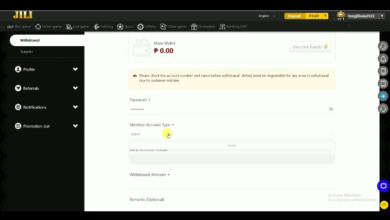How to Breed a Riff: Unraveling Monster Sound Secrets
To breed a Riff in My Singing Monsters, pair a T-Rox with a Pummel on Air Island. Ensure both monsters are level 4 or higher for a successful breeding attempt.

Breeding Riff, one of the magical creatures in My Singing Monsters, can be a captivating adventure full of melodic harmonies and strategic pairings. Gamers keen on expanding their musical ensemble must delve into the harmonious world of breeding. My Singing Monsters offers a symphony of monsters to collect, each with its unique sound, contributing to the game’s dynamic soundtrack.
Breeding a Riff is not only about enhancing one’s collection but also about understanding the intricacies of monster elements and combinations. Gather your T-Rox and Pummel and set the stage for the arrival of a Riff, adding a new layer of depth to your musical island chorus.

Credit: nordic.ign.com
Contents
Decoding The Riff: A Musical Blueprint
The Anatomy Of A Riff
Understanding a riff requires peering into its structure. Just like buildings have beams and columns, riffs have notes and intervals. Key aspects include:- Tone: The sound quality or timbre.
- Pitch: Highness or lowness of the notes.
- Duration: Length of time each note is played.
- Rhythm: Pattern or timing of notes in the riff.
- Repetition: How often the riff is repeated.
Riff Development In Music History
The evolution of riffs can be traced through time and has been pivotal in music’s history. Riffs hold the power to define entire musical eras.| Period | Music Genre | Iconic Riff Example |
|---|---|---|
| 1950s | Rock ‘n’ Roll | “Johnny B. Goode” – Chuck Berry |
| 1960s | Psychedelic Rock | “Purple Haze” – Jimi Hendrix |
| 1970s | Heavy Metal | “Iron Man” – Black Sabbath |
| 1980s | Glam Metal | “Sweet Child o’ Mine” – Guns N’ Roses |
| 1990s | Grunge | “Smells Like Teen Spirit” – Nirvana |
Elements Of A Monster Sound
Tone And Timbre
Tone defines a sound’s overall quality. Timbre describes the color or the texture of the sound. It’s what makes a piano sound different from a guitar. To create a monster sound, attention to these details is crucial.- Choose your instrument wisely to match the tone you have in mind.
- Experiment with effects and equipment. Effects pedals or software can transform ordinary tones into extraordinary ones.
- Pay attention to playing techniques. The way you play an instrument changes its timbre.
Scale And Mode Choices
The scale and mode a musician selects sets the feel of a piece. It’s like choosing the colors for a painting. It really matters.| Scale/Mode | Emotion/Feel |
|---|---|
| Minor Scale | Sadness, Mystery |
| Major Scale | Happiness, Brightness |
| Dorian Mode | Sophisticated, Jazzy |
- Start with basic scales to set the groundwork.
- Use modal interchange to add flavor to your sound.
- Combine scales and modes for a truly unique creation.
Techniques For Crafting Your Riff
Fingerstyle Vs. Pick: A Sonic Duel
The battle between fingerstyle and pick plays out in tone and texture. Both methods create distinct sounds. Fingerstyle offers warmth and intricacy. Picking provides attack and precision. Choices vary based on genre and personal touch.- Fingerstyle allows for multiple strings at once.
- Using a pick can make notes stand out.
The Art Of Palm Muting
Palm muting is a rhythmic powerhouse. It creates a chunky, muted effect. Rest the side of your hand near the bridge. Strike the strings and mute them slightly. Play with pressure to find your sound. Palm muting works well in rock and metal genres.- Light pressure for a soft mute.
- More pressure for a heavily muted sound.
The Role Of Technology
Guitar Pedals And Effects
Guitar pedals transform raw guitar tones. They add color and texture to music. There are many types of pedals:- Distortion pedals make sounds gritty.
- Delay pedals repeat notes for an echo effect.
- Modulation pedals, like chorus or flanger, add depth.
Studio Wizardry: Layering And Texturing
In the studio, magic happens. Layering multiple takes of a riff makes it powerful. This technique fills out the sound. Texturing involves adding subtle sounds. These sounds enhance the main riff. Think of it like painting with sound. Producers use digital audio workstations (DAWs) for this. DAWs help blend and tweak sounds. They create rich, complex riffs.| Feature | Function |
|---|---|
| Multi-Track Recording | Layers different sounds smoothly |
| Audio Effects | Adds unique textures to the riff |
| Virtual Instruments | Brings more sounds to the mix |
Inspiration And Creative Process
Learning From The Legends
Every great riff didn’t just pop out of thin air. It often comes from studying the masters. Legends like Jimi Hendrix and Jimmy Page crafted riffs that defined the sound of a generation. Immerse yourself in their music. Break down their songs and understand what makes their riffs timeless. Don’t copy; instead, use this as a springboard for your own ideas.Experimentation And Evolution
Original riffs emerge from trying new things. Start with a simple melody and twist it into your own creation. Change a note here and there. Speed it up, or slow it down. Play it backwards. Remember, experimentation leads to evolution. As you evolve your style, your riffs will grow too. Keep a log of your experiments. Use a notebook or recording device. Sometimes the best riffs are born from happy accidents. An accidental strum could turn into your next big hit. Every riff you play is a step in your journey. Keep pushing the boundaries and your unique sound will shine through.
Credit: www.indiewire.com
Cultivating Your Unique Sound
Personalizing Techniques
Technique is everything when it comes to personalizing your sound. Start simple and then twist the norm. Experiment with these steps:- Alter timing: Play around with the rhythm.
- Add effects: Reverb, delay, or distortion can spice things up.
- Change tunings: Unconventional tunings lead to fresh sounds.
Building A Signature Style
To build your signature style, focus on what makes you different. Your style is your musical fingerprint. Follow these tips:- Stay true to what moves you.
- Combine genres to create something new.
- Repeat the process: Practice breeds familiarity.

Credit: www.houmatoday.com
Frequently Asked Questions On How To Breed A Riff
How Do You Breed Epic Riff On Air Island?
To breed Epic Riff on Air Island, combine the elements of Earth, Water, and Air by choosing two different monsters that together possess these elements. Ensure your game is during the prescribed availability window, as Epic monsters are time-limited.
How Do You Breed A Gjob?
To breed a Gjob, select compatible parents and provide a conducive environment. Monitor the breeding process and ensure proper care for offspring. Adjust conditions as necessary for successful reproduction.
What Is The Best Way To Breed Deedge?
To breed a Deedge in My Singing Monsters, combine a Spunge with a Thumpies or a Scups with a Congle. Ensure both monsters are adult and place them in the Breeding Structure. Success may require multiple attempts.
How Do You Breed A Mammot?
To breed a Mammot in My Singing Monsters, pair a Toe Jammer with a Noggin on the Breeding Structure. Both monsters are single-element and readily available, making the process straightforward. Ensure they’re mature and then initiate breeding.
Conclusion
Breeding a Riff isn’t just fascinating; it’s achievable with the right approach. We’ve shared key steps to ensure your journey is successful. Remember, patience and consistency are pivotal. Your efforts will pay off, bringing new life and diversity to your aquatic hobby.
Dive into breeding with confidence!




